
Legend of Grimrock review
There hasn’t been a whole lot in the way of classic computer RPGs in this era of gaming. Games like Might & Magic and Ultima defined the genre in the mid-80s and early 90s, but they seem to have disappeared due to RPGs utlizing more and more modern mechanics, like Skyrim or, God help us, World of Warcraft. Along comes a game that modernizes the classic CRPG genre, Legend of Grimrock, and it’s pretty rad.
Legend of Grimrock revolves around four prisoners, sent to the top of Mount Grimrock to make up for their crimes. Sealed in its dungeon, from which no prisoner has ever escaped, they must find a way out of Grimrock alive. Pretty simple concept, but the story is deeper than you might think. Notes and equipment left behind by other prisoners bring help and insight to the inner workings of the dungeon. Occasionally while resting, you’ll see visions of gears in your dreams accompanied by ominous on-screen text — I mean, an ominous voice. Saying any further about the story would be spoiling, but they do keep it mysterious enough that you genuinely might not expect what happens next.
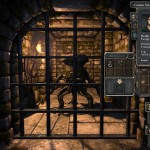 The gameplay of Grimrock is just as unsuspectingly deep as the story. As a throwback to games of old, Grimrock’s dungeon design is based on a grid, and your party moves one square at a time. Each level of the dungeon is filled with mazes, monsters, puzzles, and traps. Considering the game’s abundant reuse of graphics, it would be easy to get lost if the game didn’t have a convenient map that automatically records the dungeon’s layout as you traverse. For the hardcore, before starting the game you’re given an option of playing through without the automap, encouraging usage of good old grid paper and self-employed cartography. The designers also took care into ensuring you don’t get lost by adding distinct decorations to walls such as torches, chains, and even doors. On each level is a big blue crystal that fully heals and resurrects your party, providing great areas to save your game (which you should do often).
The gameplay of Grimrock is just as unsuspectingly deep as the story. As a throwback to games of old, Grimrock’s dungeon design is based on a grid, and your party moves one square at a time. Each level of the dungeon is filled with mazes, monsters, puzzles, and traps. Considering the game’s abundant reuse of graphics, it would be easy to get lost if the game didn’t have a convenient map that automatically records the dungeon’s layout as you traverse. For the hardcore, before starting the game you’re given an option of playing through without the automap, encouraging usage of good old grid paper and self-employed cartography. The designers also took care into ensuring you don’t get lost by adding distinct decorations to walls such as torches, chains, and even doors. On each level is a big blue crystal that fully heals and resurrects your party, providing great areas to save your game (which you should do often).
Grimrock’s puzzles are one of the game’s most prominent aspects, and it’s done extremely well. Riddles, hidden walls, pressure plates, and portals are just a few of the game’s puzzle mechanics. The majority of them are rewarding and mentally satisfying when you solve them, and you’ll find them all throughout the game from start to finish. It’s clear the designers took full advantage of the game’s grid level design. Just be careful or you may trigger traps, such as monster ambushes, or falling into pits where you have to deal with the challenges within in order to escape.
Speaking of monsters, Grimrock unfortunately doesn’t have a huge variety. Enemies range from run of the mill giant snails, slimes and fungus creatures, to living armor and massive ogres. The combat, however, may make up for it, another example of the game’s hidden depth. Your party is aligned in a 2×2 square, and you attack by clicking a character’s weapon icon on the screen, so it’s pretty user-friendly. The characters up front deal with enemies directly, whereas characters in the back row won’t take frontal melee damage, but cannot attack with melee weapons. They can, however, use throwing weapons or cast spells to deal their share of combat damage.
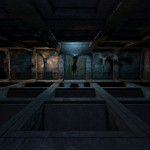 If you’re ambushed from the back or sides, the two characters corresponding to those sides will be the ones to take damage. Since the game plays in real time, you can side-step to avoid enemy attacks. Spellcasting is done by selecting runes on a 3×3 square, followed by clicking a button to cast it, sort of like an old-school game password. There’s a good assortment of spells to cast – from area of effect fireballs and long-range ice shards, to resistance shields and even invisibilty. Unfortunately, there are no healing spells, but all of these factors add much to the game’s combat, setting itself apart from other games of its kind.
If you’re ambushed from the back or sides, the two characters corresponding to those sides will be the ones to take damage. Since the game plays in real time, you can side-step to avoid enemy attacks. Spellcasting is done by selecting runes on a 3×3 square, followed by clicking a button to cast it, sort of like an old-school game password. There’s a good assortment of spells to cast – from area of effect fireballs and long-range ice shards, to resistance shields and even invisibilty. Unfortunately, there are no healing spells, but all of these factors add much to the game’s combat, setting itself apart from other games of its kind.
You can start with pre-made characters, but it’s recommended that you create your own, at least after getting used to the gameplay with the pre-made party. There aren’t many races or classes, but the skills make up for it. Grimrock’s skills follow a milestone progression system similar to Dragon Quest 8 or 9, and you’ll reach ability milestones frequently. These include passive bonuses such as increased stats, combat perks such as backstabbing, as well as granting the ability to cast new spells. Characters tend to gain about one new ability per level by investing points in each skill, keeping the game’s flow moving smoothly. One downside is that the game doesn’t tell you how to cast certain spells until you come across them written on scrolls throughout the game. It’s again comparable to a password, but you can’t cast spells you know until you invest enough skill points to allow you to cast it.
Grimrock is a game about survival – there’s no gold and no merchants to barter with. Each character has a food meter which needs to be sustained semi-regularly lest you starve to death. Your party members also each have inventory and weight carrying limitations, so you need to prioritize which items are more important. Food is hard to come by, so it’s best use it only when you need it, and you’ll eventually come across alchemy tools with which you can brew potions to restore health, cure poison, etc., again adding to the game’s survival factor as well as overall immersion.
Ultimately, Grimrock’s biggest downfall is its replayability. It’s a fantastic game from start to finish, but once you know the solution to the puzzles, it can detract from multiple playthroughs. Inversely, if you explore too little with the intention of replaying the game with a new party, it’s harder to overcome difficulty spikes that often occur when you reach the next floor of the dungeon. It could also be considered short; in my first playthrough, finding as many secrets as I could, took me about 18 hours. Legend of Grimrock is a game where your mileage may very depending on what you want from it. Just when you’re satisfied with the investments you’ve made in your character’s skills, the game is over.
Legend of Grimrock is a great game with a couple of big flaws. Its best accomplishment is how much depth it manages to sneak into a game that looks shallow on the surface. It’s an immersive experience based on pure gameplay mechanics complimented by a sense of isolation and not knowing what’s next. Like Portal 2, it’s a great game that’s best on your first real playthrough, and ends too soon with little to fall back on in replayability. Thankfully, a level editor is in the works, so expect player-made campaigns in the near future to help remedy the game’s shortcomings.
4 out of 5
Legend of Grimrock is currently only available for PC as a digital download, but an iOS version is planned.
Categories: Reviews
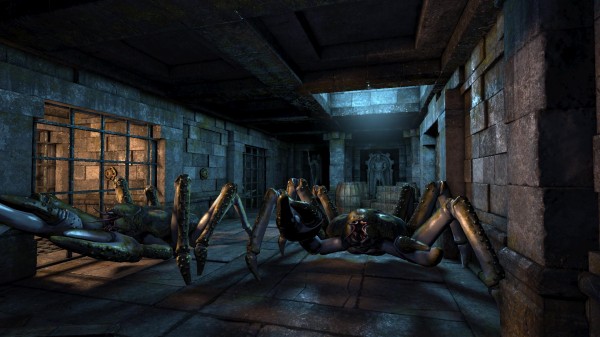
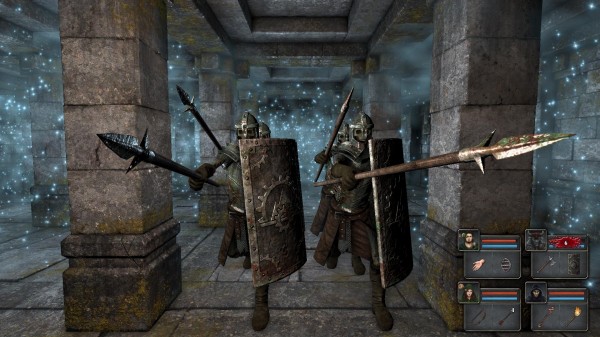
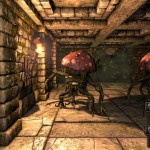
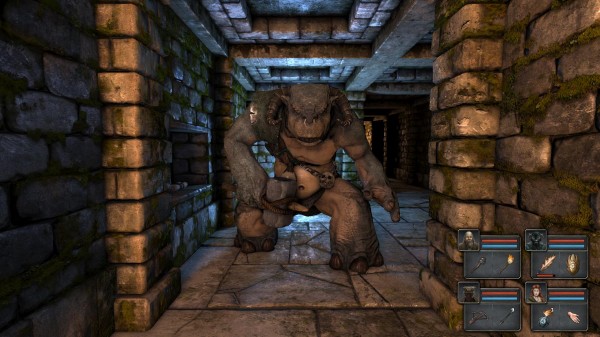
0 Comments
This post has been left all alone with no comments. Don't leave it lonesome - give it some company with a comment.